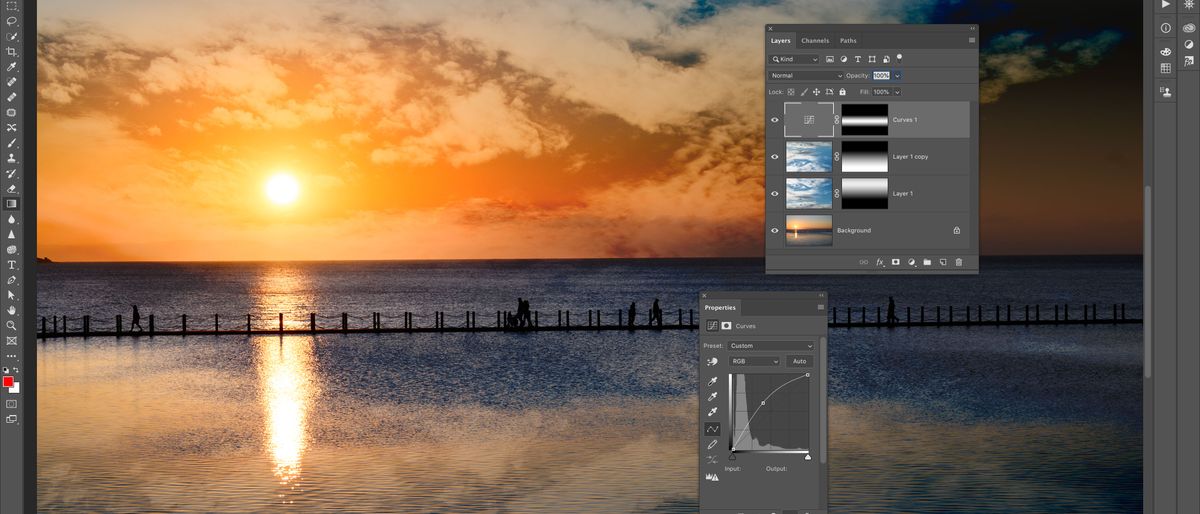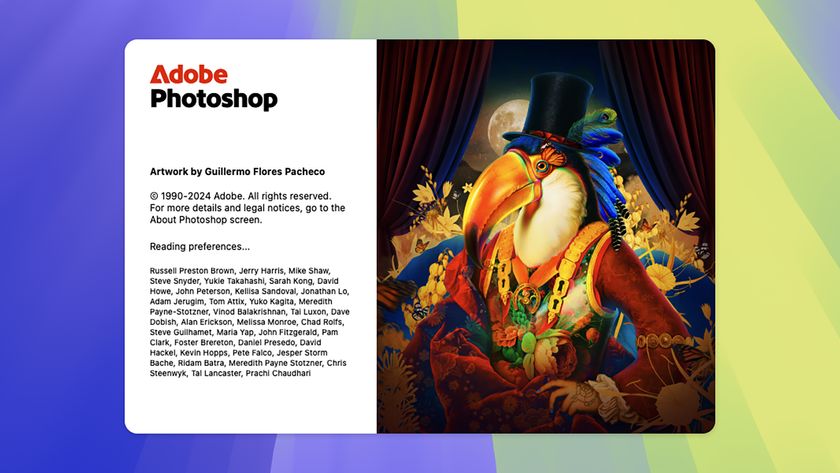TechRadar Verdict
Photoshop CC is only available with a Creative Cloud subscription, which will put some people off straight away, but Adobe’s Photography Plans start at £9.98/$9.99 per month, and that includes Lightroom too. For novices and enthusiasts there are smarter (non-subscription) alternatives to Photoshop, but for photography pros, Photoshop is practically a required skill. It’s slick, it’s efficient and it’s still the premier photo editor for experts.
Pros
- +
Basic Photography Plan is a good deal
- +
You get Lightroom too
- +
Clean and efficient interface
- +
Photoshop skill is a career qualification
Cons
- -
Some people just hate subscriptions
- -
Little help for novices
- -
No one-click effects or presets
Why you can trust TechRadar
If you can imagine it, you can Photoshop it. What that doesn’t tell you is where you’re going to get your ideas from and how easy (or not) it’s going to be.
That’s a key point with Photoshop – it’s extremely good at what it does, but there’s a lot that it doesn’t do. It’s exceptionally good at detailed, technical adjustments on single images, but it doesn’t have any integrated image organisational tools to speak of (that’s Lightroom’s job), and it doesn’t offer any ideas, inspiration or preset image effects to get you started.
Photoshop can do pretty well anything, but you have to bring your own ideas and inspiration, and you’ll need to know your way around Photoshop’s powerful and extensive tool set to bring them to life.
You can subscribe to Photoshop on its own via an Adobe single app subscription, but that’s the expensive way of doing it. Adobe offers three Photography Plans which are much more cost effective.
Lightroom CC plan This includes Lightroom CC and 1TB of cloud storage for £9.98/$9.99 per month when bought as an annual subscription. This does not include Photoshop, so don’t get this one.
Photography plan This includes Photoshop CC, Lightroom CC, Lightroom Classic CC and 20GB of cloud storage for £9.98/$9.99 per month and really is very good value for money.
Photography plan with 1TB of cloud storage This is the same as the Photography Plan above, but adds 1TB of cloud storage, primarily for Lightroom CC. This costs £19.97/$19.99 per month, but only makes sense if you want to go with Adobe’s cloud-based Lightroom CC rather than the desktop Classic version (a whole different discussion).
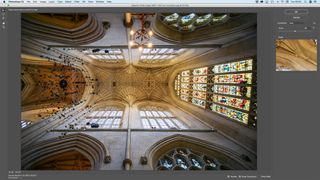
Features
It’s pretty difficult to sum up every feature in Photoshop without writing a book about it, but it is possible to explain broadly how it works and some of its most interesting tools. Photoshop works directly on the pixels in your images, so it’s not a fully ‘non-destructive’ editor that lets you wind back your changes at any time. By using its system of layers intelligently you can backtrack if you need to, but only at the cost of massive image files in the proprietary PSD file format.
Layers are the backbone of Photoshop’s capabilities. You can use non-destructive ‘adjustment layers’ to modify your image’s appearance without changing the underlying pixels (so it can be non-destructive in that sense), but you can also combine image layers to produce sophisticated montages built from two or more images and blended with layer masks and blend modes.
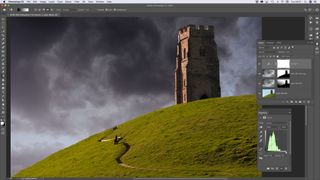
You can also add vector-based ‘shape’ layers that can be edited later, and re-editable ’type’ (text) layers, though both these features are more relevant to designers than photographers. Photoshop isn’t just designed for photographers. It’s also made for designers, illustrators and artists, so there’s a lot here that’s not directly relevant to photography.
Photoshop’s selection and masking tools are second to none, though you do need to learn which to use for particular types of subject and how to get the most from them. There’s a good deal of skill in making masks and selections, though Photoshop can get you off to a good start with its quick and simple Selection Brush or its relatively recent Select Subject command, which can automatically select the main subject in your pictures.

You’ll almost certain need to modify tricky selections to hide or blend rough edges, but there’s a dedicated Select and Mask workspace for that.Photoshop also has some of the best tools in the business for retouching, cloning and ‘content aware’ object removal, and Photoshop CC 2019 brings a dedicated workspace for choosing source pixels and outputting the results on to a new layer for more effective editing and blending.
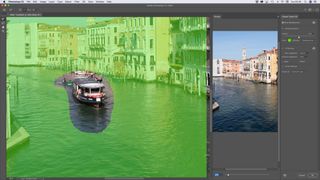
Photoshop CC is typically updated a couple of times a year (it’s all part of your subscription, of course), but the number of updates directly relevant to photographers does seem to have slowed.
The latest October 15 2018 update brought the new Content Aware Fill workspace, a redesigned homepage with access to recent files, training materials and Lightroom CC profiles, live previews of blend mode changes and not a whole lot else.
The clever new Select Subject option arrived in January 2018, together with a slider to control decontamination around selection edges (whoop!), and before that in October 2018 Adobe introduced 360 editing tools, depth map support for HEIF files and smattering of other enhancements and improvements.
In fairness to Adobe, it’s hard to see how much more can be added to Photoshop to make it genuinely better, but the pace of change is underwhelming nevertheless.
Interface and ease of use
For a program with such enormous power, sophistication and control, Photoshop has a remarkably clean and simple interface. Most photo-editing software looks much messier than this, and while you do have to learn where to find the tools you need and how to use them, you have a wonderfully uncluttered space to work in.
Down the left hand side of the screen is a narrow vertical toolbar with fly-out menus for sub-options like different brush types and cloning tools. Across the top of the screen is a slim and fuss-free options bar which displays settings for the currently selected tool. Over on the right is the real tour de force – a system of stacked, tabbed, collapsible palettes for everything from layers to channels, actions and adjustments.


In fact, if you’re using Photoshop for photo enhancement, you’ll probably find the Layers palette is the only one you need for much of your work. This is stripped back interface design at its best.
But then Photoshop does have a bit of an easy ride compared to most rivals. It doesn’t have to make space for displaying effects and presets because there aren’t any, and it doesn’t need to display an image browser because that’s Lightroom’s job.The Photoshop interface is a beautifully direct and simple place to work, and there are now handy animated ‘tooltips’ for its key tools. Photoshop has a reputation for being daunting, but that’s actually not fair – you just have to be prepared to learn some basic principles.
Performance and results
Photoshop feels very fast on the 2017 iMac with 16GB RAM used for testing. Some processes will slow it down, and one of the key selling points of Affinity Photo, its keen rival, is sheer speed, but for most everyday operations, Photoshop’s speed was not an issue, even with the 50MP images from a Fujifilm GFX 50R that we were using. As for image quality, that’s down to user skill and judgement. When you’re familiar with Photoshop you can make it do pretty much anything you like with your raw materials, and if you judge your adjustments badly it’s down to you, not the software.
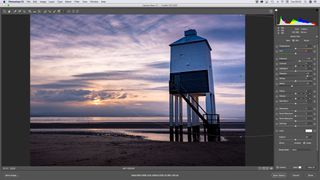
With one exception. If you’re starting from a raw file you’ll be using either Adobe Camera Raw or Lightroom (both use the same raw processing engine) to prepare your image file for Photoshop. They’re good, but not quite the best, especially when it comes to balancing image noise and detail. If you’re obsessed with raw files and image quality, Capture One and DxO PhotoLab are out in front. Adobe’s raw conversions are very good, but slightly behind.
It’s a tiny compromise you have to accept when you buy into the Adobe Photography Plan ecosystem.
Verdict
Don’t get Photoshop just because it’s ‘the best’. The best at what? It’s the most powerful photo editor in the world at in-depth image manipulation, but for all the other things you might want to do – photo organising, raw processing, effects and presets – it hands you off to other programs and plug-ins.
Photoshop is practically a must-have tool for professional photographers and artists, if only as a kind of career qualification, but while its abilities are very deep indeed, they’re also pretty narrow.
Photoshop CC is only available with a Creative Cloud subscription, which will put some people off straight away, but Adobe’s Photography Plans start at £9.98/$9.99 per month, and that includes Lightroom. For novices and enthusiasts there are smarter (non-subscription) alternatives to Photoshop, but for photography pros, Photoshop is practically a required skill. It’s slick, it’s efficient and it’s still the premier photo editor for experts.
Competition

Affinity Photo 1.6
The most direct rival to Photoshop offers a very competitive set of pro-orientated tools without tying you in to a subscription plan and comes with a surprisingly low price tag. You will need other software for image cataloguing though.

ON1 Photo RAW 2019
This is an all-in-one application that combines image organisation, non-destructive editing, a large library of creative effects and even image layers and masks. What it lacks in Photoshop-style power it makes up for in sheer breadth and scope.

Skylum Luminar 3
Where Photoshop is pitched squarely at at pros, Luminar is aimed at creative types and experimenters keen to explore new ‘look’s for their photos. Luminar 3 adds built in image organising tools and makes a very effective everyday image fixer-upper too.

Rod is an independent photographer and photography journalist with more than 30 years' experience. He's previously worked as Head of Testing for Future’s photography magazines, including Digital Camera, N-Photo, PhotoPlus, Professional Photography, Photography Week and Practical Photoshop, and as Reviews Editor on Digital Camera World.
Most Popular






